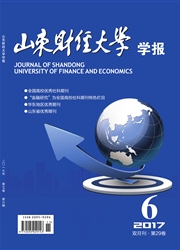

 中文摘要:
中文摘要:
为了实证分析了山东省工业生态效率,文章使用2007-2012年山东省34个工业行业的数据.首先,运用构建综合评价指标的方法得到污染排放强度综合评价指数,并进一步结合各行业对GDP的贡献率进行了聚类分析,最终将山东省工业行业划分为生态效率高、中、低三种类型.其次,应用DEA数据包络分析方法,测算了山东省各工业行业2007-2012年年均节能潜力.分析表明,虽然环境约束促进了工业生态效率的提高,但山东省整体工业生态效率依然偏低,不同工业行业节能潜力差异较大,未来还存在很大的节能空间.山东省未来工业发展的重点应该是有针对性的工业结构调整与制度环境的完善.
 英文摘要:
英文摘要:
An empirical study of Shandong industrial eco-effieiency was conducted based on the data of 34 Shan- dong industries from 2007 to 2012. The industries in Shandong Province, whose average annual energy-saving poten- tial is measured through Data Envelopment Analysis, are divided into high, medium and low eco-efficiency types ac- cording to their pollution-discharging intensity evaluation indexes and GDP contribution rates. The results show that the energy-saving potential, with plenty of scope to improve in the future, differs greatly in different industries al- though the general industrial eco-efficiency level remains relatively low. Therefore, Shandong industries should focus on pertinently adjusting industrial structure and improving policy environment for further development.
 同期刊论文项目
同期刊论文项目
 同项目期刊论文
同项目期刊论文
 期刊信息
期刊信息
